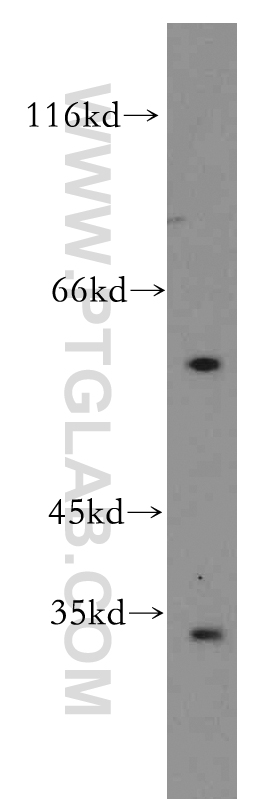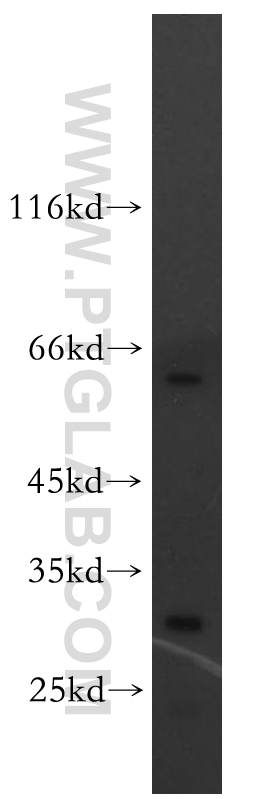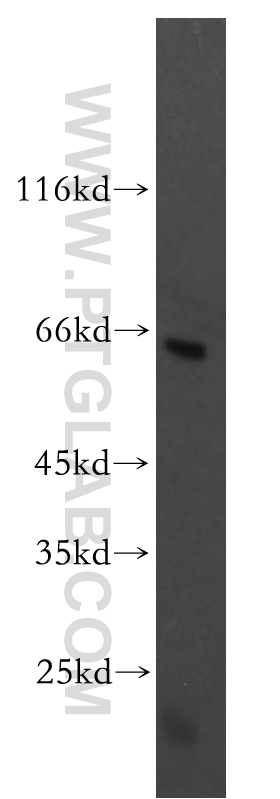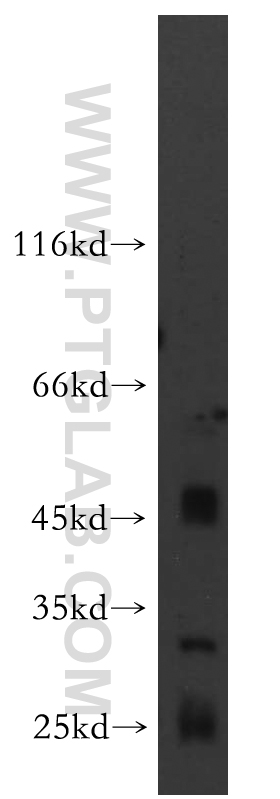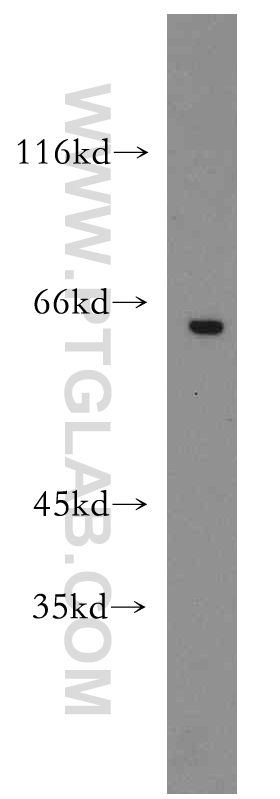验证数据展示
经过测试的应用
| Positive WB detected in | SH-SY5Y cells, HeLa cells, human brain tissue, Y79 cells |
推荐稀释比
| 应用 | 推荐稀释比 |
|---|---|
| Western Blot (WB) | WB : 1:500-1:2000 |
| It is recommended that this reagent should be titrated in each testing system to obtain optimal results. | |
| Sample-dependent, Check data in validation data gallery. | |
产品信息
15254-1-AP targets GPR162 in WB, IHC, IF, ELISA applications and shows reactivity with human samples.
| 经测试应用 | WB, ELISA Application Description |
| 文献引用应用 | WB, IHC, IF |
| 经测试反应性 | human |
| 文献引用反应性 | human, mouse |
| 免疫原 |
CatNo: Ag7011 Product name: Recombinant human GPR162 protein Source: e coli.-derived, PET28a Tag: 6*His Domain: 328-588 aa of BC002353 Sequence: ERYRADVRTVWEQCVAIMSEEDGDDDGGCDDYAEGRVCKVRFDANGATGPGSRDPAQVKLLPGRHMLFPPLERVHYLQVPLSRRLSHDETNIFSTPREPGSFLHKWSSSDDIRVLPAQSRALGGPPEYLGQRHRLEDEEDEEEAEGGGLASLRQFLESGVLGSGGGPPRGPGFFREEITTFIDETPLPSPTASPGHSPRRPRPLGLSPRRLSLGSPESRAVGLPLGLSAGRRCSLTGGEESARAWGGSWGPGNPIFPQLTL 种属同源性预测 |
| 宿主/亚型 | Rabbit / IgG |
| 抗体类别 | Polyclonal |
| 产品类型 | Antibody |
| 全称 | G protein-coupled receptor 162 |
| 别名 | A 2, G protein coupled receptor 162, GPR162, GRCA |
| 计算分子量 | 64 kDa |
| 观测分子量 | 33 kDa, 64 kDa |
| GenBank蛋白编号 | BC002353 |
| 基因名称 | GPR162 |
| Gene ID (NCBI) | 27239 |
| RRID | AB_10665369 |
| 偶联类型 | Unconjugated |
| 形式 | Liquid |
| 纯化方式 | Antigen affinity purification |
| UNIPROT ID | Q16538 |
| 储存缓冲液 | PBS with 0.02% sodium azide and 50% glycerol, pH 7.3. |
| 储存条件 | Store at -20°C. Stable for one year after shipment. Aliquoting is unnecessary for -20oC storage. |
实验方案
| Product Specific Protocols | |
|---|---|
| WB protocol for GPR162 antibody 15254-1-AP | Download protocol |
| Standard Protocols | |
|---|---|
| Click here to view our Standard Protocols |
发表文章
| Species | Application | Title |
|---|---|---|
Acta Neuropathol Commun Blood-based CNS regionally and neuronally enriched extracellular vesicles carrying pTau217 for Alzheimer's disease diagnosis and differential diagnosis | ||
Bone Marrow adipogenic lineage precursors (MALPs) facilitate bone marrow recovery after chemotherapy | ||
JCI Insight Transient expansion and myofibroblast conversion of adipogenic lineage precursors mediate bone marrow repair after radiation. |

